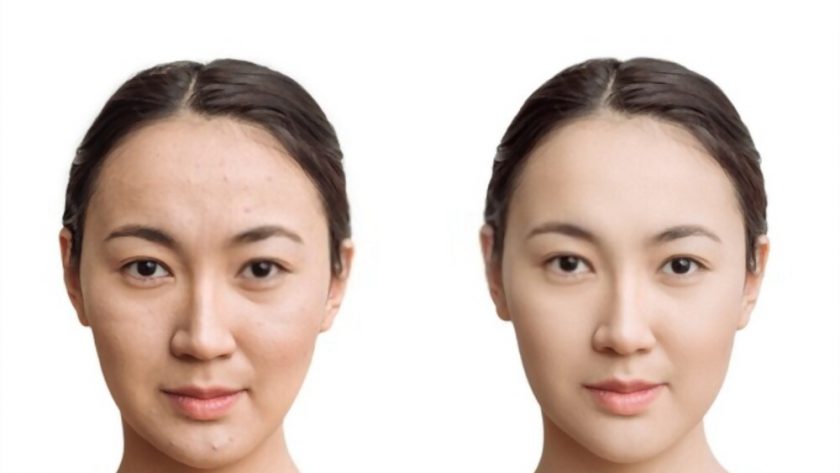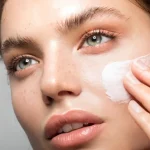Sallow skin is a condition that causes the person to have a yellowish or pasty depiction. There are a lot of various causes for this skin tone, including genetic makeup and specific kinds of medication (such as high blood pressure). However, everything from your diet to everyday life can be behind it as well. Here, you will learn about what causes the symptoms and why darkly-tanned skin isn’t always the healthiest!
What Does Sallow Skin Look Like?
If you have naturally sallow skin, you might be wondering what red flags to look out for when you’re assessing if someone is healthy. According to Mayo Clinic, there are some telltale signs of poor health that can include a complexion that is unusually pale or light without any noticeable tanning, dry skin, fragility or thinning hair, blue eyes that seem sensitive to the sun, and uneven skin tone. If any of these signs apply to you, it might be a good idea to see a doctor for further evaluation.
It is difficult to find products that will make your skin look good without being too oily or heavy. Thankfully, there are several products at online stores like, skintes.com, amazon.com, ulta.com and local market that can help you achieve a healthy-looking complexion without resorting to harsh chemicals.
Here are a few tips for using these products:
- Start by washing your face with warm water and a gentle soap.
- Apply a hydrating toner to your face after washing it. This hydrating ingredients will help to restore the moisture in your skin and make it feel softer.
- Apply a lightweight moisturizer to the entirety of your face. This will help to prevent dryness and wrinkles, as well as keep your skin looking supple and smooth.
What Can Cause Sallow Skin?
Sallow skin is one of the most common skin conditions. It can be caused by an array of different factors, many of which are out of our control. Here we’ll outline some of the most common causes and discuss the symptoms and treatment options.
1. Environment
A lot of what we experience in our environment can impact our skin, both positively and negatively. Smoking, pollution, and sun exposure can cause sunburns, lesions, and even Sallow Skin. On the other hand, a healthy diet full of antioxidants can have a positive effect on skin health.
2. Genetics
Some people are just more prone to developing Sallow Skin than others. Though the cause is often unknown, there’s no reason to be discouraged. There are plenty of treatments available that can help counteract the effects of Sallow Skin, regardless of your particular situation.
3. Medical Conditions
Several medical conditions can affect the skin and lead to Sallow Skin. These include eczema, psoriasis, and rosacea. In addition, various hormonal imbalances and autoimmune diseases can also cause Sallow Skin problems in their patients.
4. Dietary Habits
It’s thought that the condition may have a dietary cause as well. Sallow Skin occurs in people who eat dairy products, such as milk, cheese, and yogurt. To prevent the manifestation of Sallow Skin symptoms, you should cut back on dairy products (especially cow’s milk). If you love them as much as we do, go for skim milk or lactose-free varieties.
5. Cold Weather
The condition will often be exacerbated when exposed to certain elements, such as cold winds and freezing weather; thus is why it’s considered a summer skin allergy. When it inevitably comes autumn/winter time, however, no skin harm can be done by exposing yourself directly to those elements instead!
6. Stress
The symptoms of Sallow Skin can appear in both active and passive sufferers. Either way, it is related to over-reaction to stress. So, be honest with yourself, think about whether or not you’re alone on the couch watching Netflix.
7. Vitamin D Deficiency
Without a good example here (as of writing) – I’ll just text Lizzie Maran for that. That is Vitamin D. The vitamin’s name should explain itself as well!
8. Pet Allergies
Let’s get this out of the way early: cat dander doesn’t make your skin turn yellow; it makes your dog scratch at his paw until he bleeds! Needless to say, if you have a thing for mammals inside an unhappy household environment.
Symptoms of Sallow Skin
If you have a light complexion and find that your skin is becoming more dry, patchy, and generally looking less healthy, you may be experiencing the signs of chronically occurring pale skin called sallow skin.
The Symptoms of a Sallow Skin Are:
- Dryness
- Loss of brightness and vibrancy in the skin
- Itching or burning when touched
- Whitening of the skin due to loss of melanin (the pigment that gives color to the skin)
- Redness and inflammation around the eyes, mouth, nose, and other areas of the skin where there is a lot of sun exposure.
There can be many other causes of sallow skin, including:
- Having a genetic disposition toward this condition
- Poor diet and lack of hydration can lead to dryness and subsequent aging of the cells in the epidermis (the outer layer of the skin)
- Environmental factors such as smoke, pollution, hot weather, or tanning beds increase your risk of developing sallow skin.
If you’re experiencing any of the above symptoms, it’s important to see your dermatologist for a proper assessment.
Easy Way to Treat a sallow Skin Condition In no time you will have cleared up your skin condition, as this is a self-healing condition that you are now smart enough not to pick up again and again! Sallow skin is self-repairing with the correct guidance and care from your Dermatologist. For most obvious signs of sallow skin (for example redness), they may prescribe medication including local steroids peels, topical creams, and over-the-counter topicals.
How to Get Rid of Sallow / Yellowish Skin Tone?
If you have a pale complexion and notice that your skin is turning yellow, it’s likely due to the sallow skin tone. The yellowish color comes from the accumulation of oils on the skin. There are several ways to get rid of this tone.
- You can use a sunscreen that has a high SPF rating to protect your skin from the sun.
- You can also use an LED light device to help stimulate the production of oils in the skin.
- Alternatively, you can take tablets or capsules that contain an ingredient that helps in the production of oil on the skin.
If none of these methods work, then it’s time to see a doctor who can give you a diagnosis and recommend the best treatment for you.
How to Apply Treatment and Prevent it from Coming Back
Anyone can have dark patches on their skin caused by a range of things like sunburn, infection, hormonal changes, and even age. The patches are called erythema pigmentosum, or EP, and they can be purple, red, light brown, or yellow and can be quite large or small.
There is no one definitive cause of EP but most cases are due to some type of environmental exposure such as the sun. If you have EP, it’s important to take note of the symptoms so you can identify any changes that may be causing it and start applying treatment.
Tips for Treating Erythema Pigmentosum(EP)
Treating the Underlying Cause
If you know the source of your EP, you can try to treat the cause by avoiding the environment that’s causing the problem or using topical treatments that block sunlight.
Using Sunscreen
Apply sunscreen liberally every day when outside in the sunlight and at least every other day when inside with natural light. Reapply regularly especially after sweating, swimming, or being in the water.
Reducing Stress
Take measures to reduce stress such as relaxing exercise, eating healthy foods, and getting enough rest.
Finding a Dermatologist
If all else fails, it’s important to visit a dermatologist as soon as possible. He or she can determine the cause of the problem and recommend the best treatment.
Avoiding Poison Ivy
The second most common allergy, behind grass pollen, is poison ivy – the plants known as poison oak and poison sumac. Both of these plants blow throughout the summer and crop up in abundance all over the country. No one likes to get contaminated with either plant’s oil while they are on holiday.
Once it gets on your skin, it’s extremely scratchy and breaks out into hives almost immediately, so you have to wash the substance off immediately lest having a rash for weeks in a row — or even worse, begin scarring. And regardless of how shocking it may be to look at when you step back after an awful experience, it will still change shapes as time passes
Conclusion
For individuals with sallow skin, the health effects can be debilitating. Sallow skin is characterized by a pale complexion and a lack of color that is noticeable even under the sunlight stone, pregnancy graying, and wrinkly skin. The sallow complexion may be the result of a lack of colored melanin or a lack of color in general (asthenia). However, there are many other modes by that sallowness is caused. There are several known factors involved in causing this condition.









